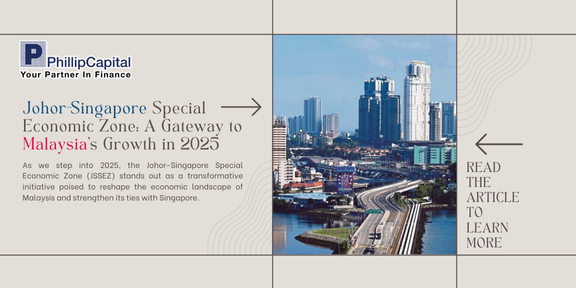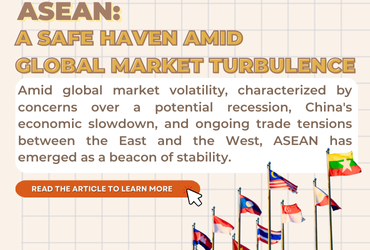
As we step into 2025, the Johor-Singapore Special Economic Zone (JSSEZ) stands out as a transformative initiative poised to reshape the economic landscape of Malaysia and strengthen its ties with Singapore. On 7 January 2025, an agreement was exchanged between Singapore and Malaysia on the Johor-Singapore Special Economic Zone (JS-SEZ) at the 11th Malaysia-Singapore Leaders’ Retreat. The JS-SEZ Agreement aims to strengthen the value proposition of Johor and Singapore to compete for global investments together by:
(a) improving cross-border goods connectivity between Singapore and Johor;
(b) enabling freer movement of people;
(c) strengthening the business ecosystem within the region.
The JSSEZ reflects the ambition of both nations to create a synergistic economic corridor, leveraging each other’s strengths to attract global investments and foster sustainable growth.
Unlocking the Potential of JSSEZ
The Johor-Singapore SEZ aims to tap into the unique resources and capabilities of Malaysia and Singapore. For Malaysia, Johor’s strategic location as the southern gateway provides ample land, a young and dynamic workforce, and cost-competitive manufacturing capabilities. Singapore, on the other hand, brings financial expertise, advanced infrastructure, and a global reputation for innovation and efficiency.
Key sectors targeted by the JSSEZ include:
- Advanced Manufacturing: Companies operating in the JSSEZ are expected to benefit from Malaysia’s established role in global supply chains, particularly in semiconductors, electronics, and precision engineering. Johor’s robust industrial ecosystem is set to expand, attracting multinational corporations.
- Green Energy and Sustainability: The SEZ will emphasize renewable energy projects, including solar farms, cross-border electricity trading, and green hydrogen initiatives. This aligns with Malaysia’s commitment to achieving net-zero emissions by 2050.
- Digital Economy and Technology: Singapore’s thriving tech ecosystem will complement Malaysia’s push to become a regional data center hub. With initiatives to enhance 5G infrastructure and cloud computing capabilities, the JSSEZ will attract investments in AI, IoT, and other cutting-edge technologies.
- Tourism and Hospitality: The integration of Johor’s natural attractions with Singapore’s global connectivity aims to position the region as a premier tourism destination in Southeast Asia.
Benefits for Malaysia
The establishment of the JSSEZ is expected to bring multifaceted benefits to Malaysia, including:
- Foreign Direct Investment (FDI): The SEZ will serve as a magnet for investors seeking to access ASEAN’s growing middle-class market while enjoying tax incentives, streamlined regulations, and robust infrastructure.
- Job Creation: The initiative is projected to create thousands of jobs in high-value industries, offering Malaysians opportunities to upskill and secure better-paying positions.
- Enhanced Connectivity: Improved cross-border infrastructure, including the upcoming Rapid Transit System (RTS) Link, will facilitate seamless movement of goods, services, and people, boosting trade and tourism.
- Knowledge Transfer: Collaborations with Singaporean firms will drive technology transfer and capacity-building, enhancing Malaysia’s competitiveness in the global market.
Outlook for Malaysia in 2025
Beyond the JSSEZ, Malaysia’s economic outlook for 2025 remains robust, with a projected GDP growth of 4.0%-5.0%. This growth will be fueled by strong domestic demand, steady exports, and strategic government policies aimed at fostering a business-friendly environment. Moody’s recent affirmation of Malaysia’s A3 sovereign rating with a stable outlook underscores the nation’s resilience and fiscal discipline.
Key growth drivers include:
- Semiconductor and Technology Manufacturing: Malaysia’s position as a global leader in semiconductor packaging and testing will attract further investments, especially amid the global push for supply chain diversification.
- Renewable Energy: The government’s focus on renewable energy development will position Malaysia as a leader in Southeast Asia’s energy transition.
- Tourism Revival: With international borders fully reopened, Malaysia’s vibrant tourism sector is set to thrive, supported by government initiatives to promote ecotourism and cultural heritage.
Conclusion
The Johor-Singapore Special Economic Zone symbolizes a new era of cooperation and shared prosperity between Malaysia and Singapore. By harnessing their respective strengths, the two nations are poised to create an economic powerhouse that will drive growth, innovation, and sustainability in the region. For Malaysia, the JSSEZ is more than just an economic initiative; it is a testament to the country’s vision of becoming a high-income nation and a key player in the global economy. As 2025 unfolds, Malaysia’s strategic initiatives, coupled with its dynamic workforce and resource-rich environment, will undoubtedly make it an attractive destination for investors and a beacon of growth in Southeast Asia.






